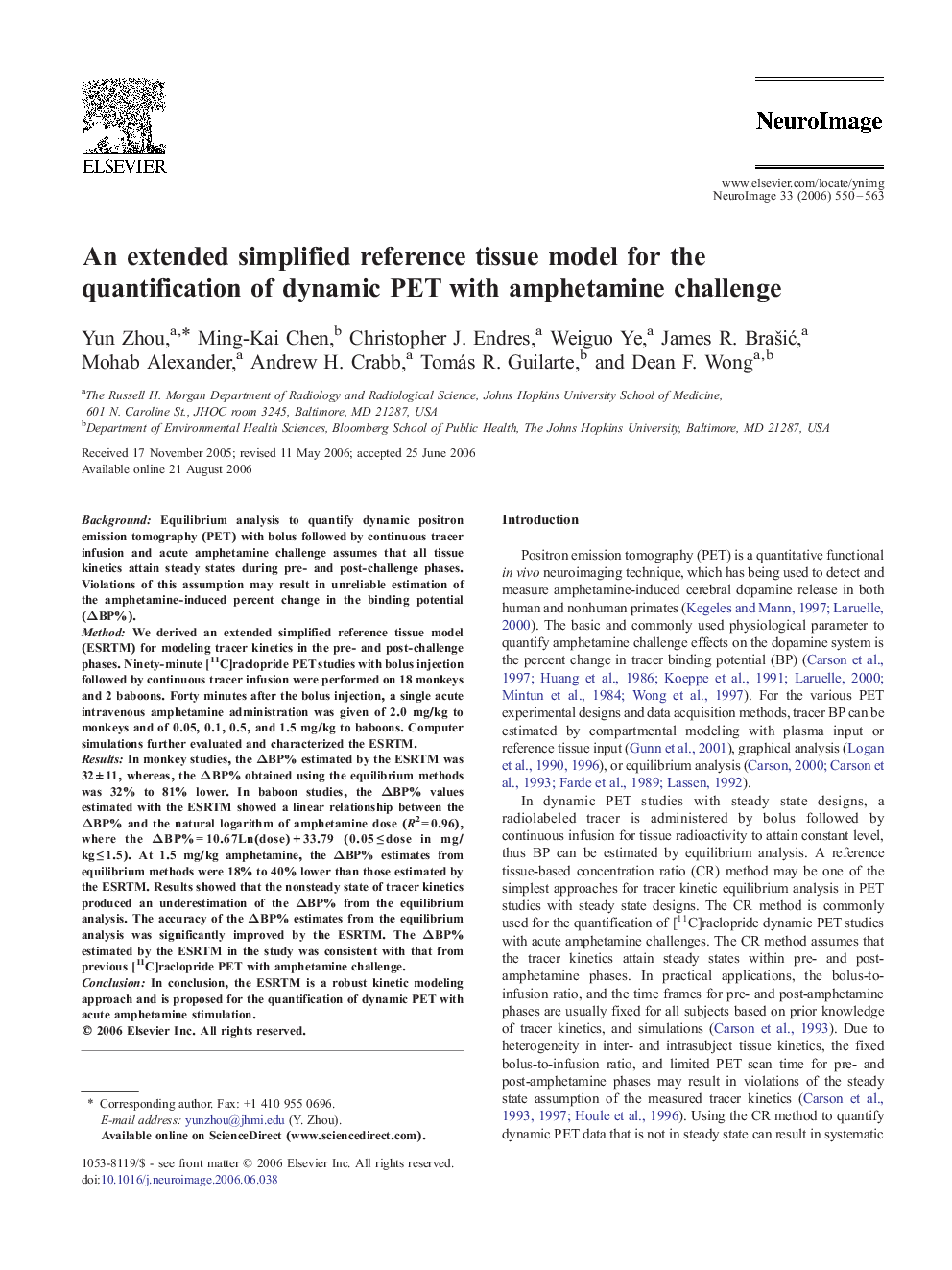| Article ID | Journal | Published Year | Pages | File Type |
|---|---|---|---|---|
| 3074451 | NeuroImage | 2006 | 14 Pages |
Background:Equilibrium analysis to quantify dynamic positron emission tomography (PET) with bolus followed by continuous tracer infusion and acute amphetamine challenge assumes that all tissue kinetics attain steady states during pre- and post-challenge phases. Violations of this assumption may result in unreliable estimation of the amphetamine-induced percent change in the binding potential (ΔBP%).Method:We derived an extended simplified reference tissue model (ESRTM) for modeling tracer kinetics in the pre- and post-challenge phases. Ninety-minute [11C]raclopride PET studies with bolus injection followed by continuous tracer infusion were performed on 18 monkeys and 2 baboons. Forty minutes after the bolus injection, a single acute intravenous amphetamine administration was given of 2.0 mg/kg to monkeys and of 0.05, 0.1, 0.5, and 1.5 mg/kg to baboons. Computer simulations further evaluated and characterized the ESRTM.Results:In monkey studies, the ΔBP% estimated by the ESRTM was 32 ± 11, whereas, the ΔBP% obtained using the equilibrium methods was 32% to 81% lower. In baboon studies, the ΔBP% values estimated with the ESRTM showed a linear relationship between the ΔBP% and the natural logarithm of amphetamine dose (R2 = 0.96), where the ΔBP% = 10.67Ln(dose) + 33.79 (0.05 ≤ dose in mg/kg ≤ 1.5). At 1.5 mg/kg amphetamine, the ΔBP% estimates from equilibrium methods were 18% to 40% lower than those estimated by the ESRTM. Results showed that the nonsteady state of tracer kinetics produced an underestimation of the ΔBP% from the equilibrium analysis. The accuracy of the ΔBP% estimates from the equilibrium analysis was significantly improved by the ESRTM. The ΔBP% estimated by the ESRTM in the study was consistent with that from previous [11C]raclopride PET with amphetamine challenge.Conclusion:In conclusion, the ESRTM is a robust kinetic modeling approach and is proposed for the quantification of dynamic PET with acute amphetamine stimulation.
